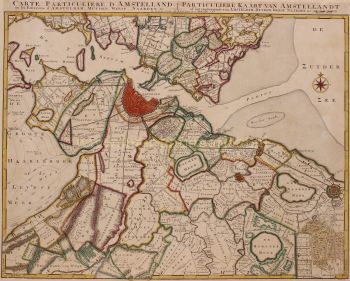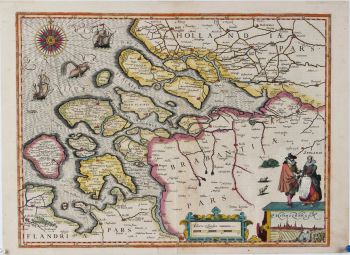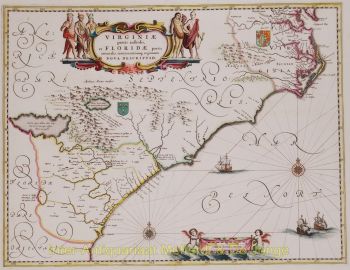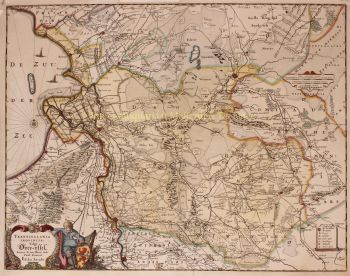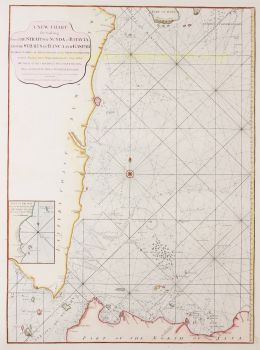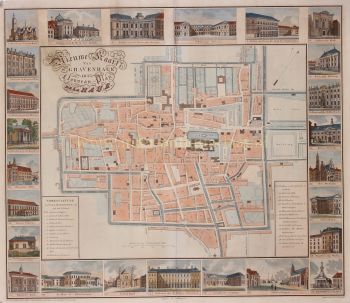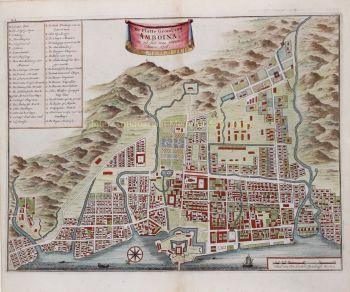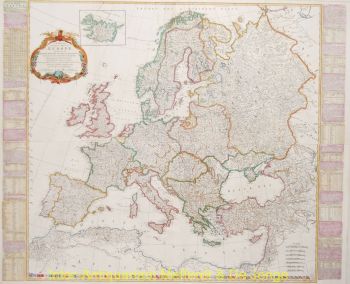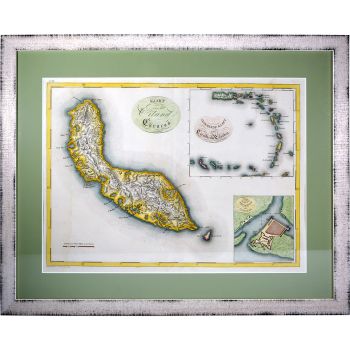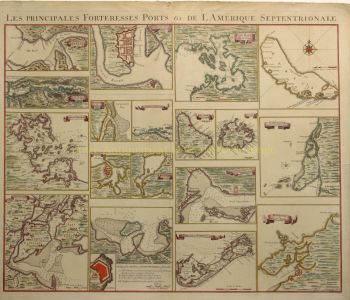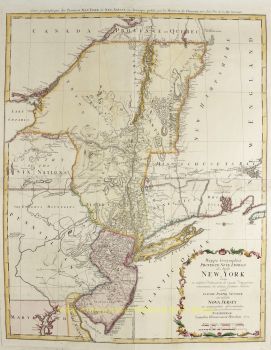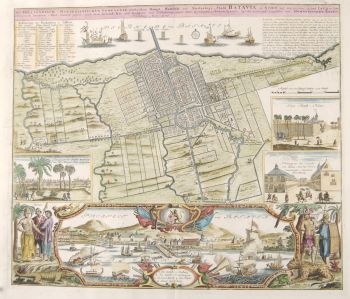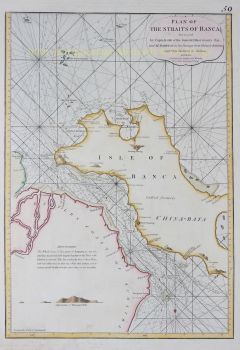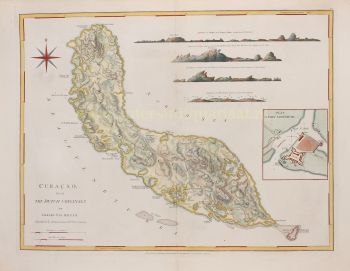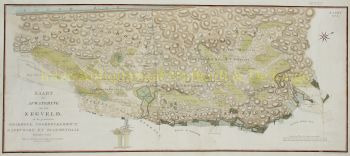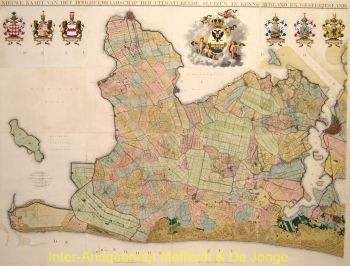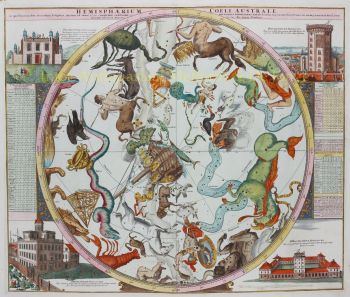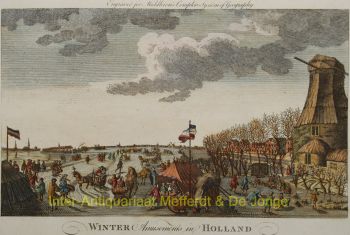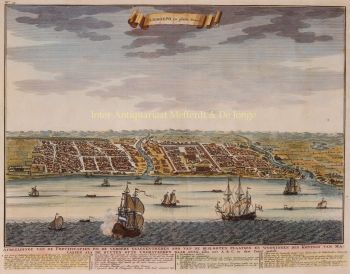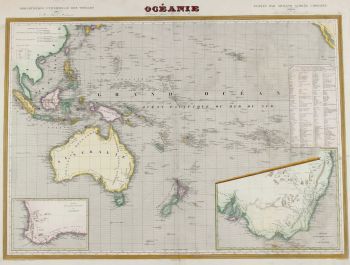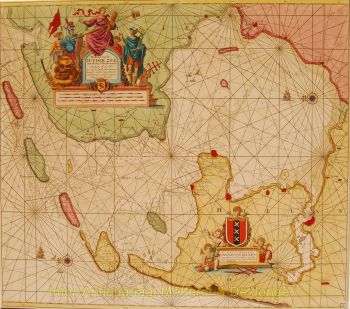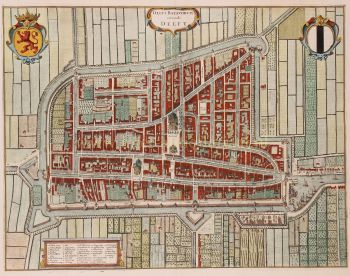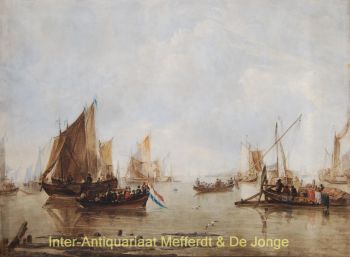Mapa del mundo 1745
Covens and Mortier
€ 2.250
Inter-Antiquariaat Mefferdt & De Jonge
- Sobre la obra de arteMappe-Monde Dressé sur les Observations de Mrs. De L'Academie Royale des Sciences et quelques autres et sur les memoires les plus recens Par M. De L'Isle. Copper engraving published by Covens & Mortier in Amsterdam 1745. Coloured by a later hand. Size: 50,8 x 63,5 cm. Guillaume De L'Isle's world map was originally published in 1700 and then revised and republished throughout the 18th century by De L'Isle and by subsequent map publishers. Dutch publishers Covens & Mortier's first version of De L'Isle's map was produced in 1720 adding the seascape with ships on the horizon at the bottom decorated with a second cartouche in the shape of a sea monster with a mermaid, merman and dolphins. They issued a later edition of that map (shown here) in about 1745 with the additional subtitle "Nouvellement corrigée apres les dernieres Decouvertes faites par l'Academie de Petersbough." The map consists of two central hemispheres, eastern and western, surrounded by four smaller polar projections. The right hand projections focus on the Northern Hemisphere while the left hand projections depict the Southern. At top center there is an elaborate decorative cartouche with various allegorical elements depicting the four great continents in female form, from top left: America, Europa, Africa, and Asia. The routes of a number of the most famous explorers of the major oceans of the world are shown from 1542 to approximately 1730, ending with the Russian voyages of Chirikov and Bering. Some of the more noteworthy features of the map includes the Russian explorations along the Northwestern coast of America, Aleutian islands shown in a semi-mythical configuration and attached to a highly conjectural Alaska; Edmund Halley's sighting of Antarctic ice; Bouvet's large Cap de la Circoncision; A depiction of the tracks of François Pelsaert's route from Australia to Java; Carpentaria attached to New Guinea; Abel Tasman's route, along with a depiction of Tasmania, distinctly separate from Australia. The map also retains one of the more curious peninsula depictions of California. Price: Euro2.250,-
- Sobre el artista
Covens and Mortier (1721 - c. 1862) fue una editorial de Ámsterdam, sucesora del extenso imperio editorial construido por Pierre Mortier (1661 - 1711).
El mapa de Covens y Mortier a menudo se critica como derivado, pero este no es completamente el caso. Pierre Mortier vivió en París desde 1681 hasta 1685. Allí estableció estrechas relaciones con los más grandes cartógrafos franceses de la época, incluidos De L'Isle y D'Anville.
Su modelo de negocio se basó en aprovechar la sofisticación y la tecnología de impresión holandesa para coeditar cartografía francesa de última generación. Tras la muerte de Mortier en 1711, su empresa pasó a manos de su hijo, Cornelius Mortier (1699 - 1783). Cornelius se casó con la hermana de Johannes Covens (1697 - 1774) en 1721 y, asociándose con su cuñado, estableció la firma Covens and Mortier.
Bajo el sello Covens and Mortier, Cornelius y Johannes continuaron con el modelo de Pierre de publicar las obras francesas más actualizadas con permiso. Rápidamente se convirtieron en una de las editoriales holandesas más grandes y prolíficas del siglo XVIII.
La empresa y sus sucesores publicaron miles de mapas durante un período de 120 años, desde 1721 hasta mediados del siglo XIX. Durante su larga vida, la firma Covens and Mortier publicó como Covens and Mortier (1721 - 1778), J. Covens and Son (1778 - 94) y Mortier, Covens and Son (1794 - c. 1862).
¿Está interesado en comprar esta obra de arte?
Artwork details
Related artworks
- 1 - 4 / 7
- 1 - 4 / 24
- 1 - 4 / 12








